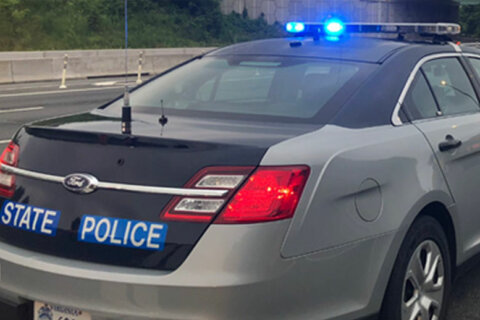This article was republished with permission from WTOP’s news partner InsideNoVa.com. Sign up for InsideNoVa.com’s free email subscription today.
This article was written by WTOP’s news partner InsideNoVa.com and republished with permission. Sign up for InsideNoVa.com’s free email subscription today.
One of Prince William County’s busiest and most complex intersections will get a complete overhaul by the middle of 2023.
The Board of County Supervisors has approved a massive project to rebuild the entire K-shaped intersection, where Route 234, the Prince William Parkway, Dumfries Road and Brentsville Road all come together.
With two new bridges to grade separate the intersection of Route 234 and Brentsville Road, as well as a continuous green-T intersection (allowing for one direction of travel to pass through uninterrupted), the goal of the project is to allow for the free-flow of traffic on the eastbound lanes of Prince William Parkway.
Additionally, left turns from Bradley Cemetery Way onto those eastbound lanes will be signal-activated, and traffic headed west on Prince William Parkway will have improved turns toward the intersection with Dumfries Road. Bradley Cemetery Way connects the Prince William Parkway with Dumfries Road north of Route 234.
The bridges will divert traffic moving north and south across the east-west running Prince William Parkway, carrying vehicles to and from Brentsville Road without any stops. The green-T intersection, one of three new traffic lights, will connect north-south running Prince William Parkway and Bradley Cemetery Way, keeping traffic on the parkway moving freely.
A shared-use pedestrian and bike path will also be built through and around the intersection, which currently has only very limited sidewalk access.
Considered by county planners to be a gateway to Interstates 66 and 95, as well as Route 1, traffic at the interchange is expected to increase with projected employment and population in Manassas and the Coles District.
According to the Virginia Department of Transportation’s 2019 data, the section of Route 234 between Route 29 and Dumfries Road draws about 47,000 trips on an average weekday. The section of Route 234 from Prince William Parkway to Olympic Drive sees about 43,000.
Coles District Supervisor Yesli Vega said the intersection has long been a site of frequent accidents and back-ups, justifying an overhaul. But, she said, she doesn’t support further widening of Route 234, something she hears concerns about from constituents.
“There are mixed views on the interchange. Most recognize that it is a choke point and something needs to be done,” Vega told InsideNoVa. “The greatest fear I hear from constituents is that this could be used to turn 234 into six lanes. … I’ve also heard from some constituents who would like there to be a more multi-modal approach to incorporate bike lanes.”
The public-private agreement, which the board approved at its Jan. 12 meeting, is with Pennsylvania-based Wagman Heavy Civil Inc. for a design-build project that is expected to be complete by late 2023.
County Transportation Director Rick Canizales said the next step before construction begins will be right-of-way acquisition, but because the new interchange will largely be overlaid on the current intersection footprint, most of the land is already owned by the county.
All $54.9 million the county requested for the project was provided by the Northern Virginia Transportation Authority as a part of its FY 2018-2023 six-year program, though the design-build contract is for just under $41 million. Canizales said the county hopes to see those cost-reductions remain throughout. As opposed to previous iterations of the project as well, there will be no traffic signals on the Route 234 bypass.
“It allows for traffic-flow movement between [Dumfries Road, Brentsville Road and Liberia extended] as well as free-flow access into the 234 bypass,” Canizales said. “We did get a lower contract and we’re hoping that we can get some cost-savings here.”
Wagman was the first contractor to put its hand up for the project, submitting an unsolicited bid in 2018 after the redesign was funded by the NVTA. But changes have been considered by transportation planners since the 1990s. In 1994 the Virginia Department of Transportation published a design concept that included a simpler cloverleaf interchange. The current design, which could see small tweaks in the design-build process, was selected as part of VDOT’s “STARS” program in 2018.







